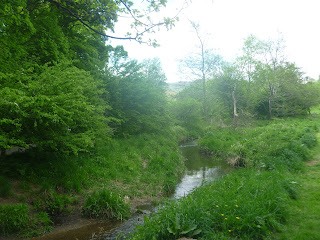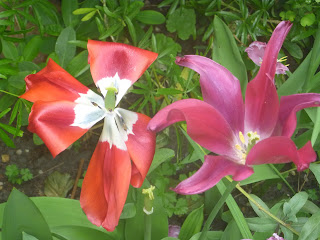I've long admired the work of willow weaver Lizzie Farey so was particularly keen to get along to her show at The Scottish Gallery in Edinburgh's Dundas Street. Her work is being shown alongside several other artists and crafters.
The gallery takes up two floors of a Georgian Terrace in Edinburgh's famous New Town. These exhibitions pack a lot in, but nothing seems crowded. As well as Lizzie Farey's beautiful wall art (see an example here) and her sculptures (see an example here) highlights included wood fired pottery from Nancy Fuller, Still Life paintings from a range of artists including Ewan McClure and beautiful paintings of nature by Naoka Shibuya.
I was particularly interested in the way that both Lizzie Farey and Nancy Fuller work so closely with the natural environment. Lizzie uses willow harvested from her own willow field along with foraged pussy willow, larch, bog myrtle, reeds and rushes. Her wall art is inspired largely by plantlife and her sculptures all have a feeling of organic form. As she says herself on the gallery website: "Natural forms provide both the foundation and inspiration for my work". Nancy Fuller meanwhile works in a croft in Aberdeenshire, using traditional methods from Taiwan, her place of birth.
The paintings by Ewan McClure in the exhibition are inspired by the work of the famous Scottish colourist S J Peploe, and in fact feature props used by Peploe himself as loaned to the artist by Peploe's grandson.
Naoka Shibuya's paintings include beautifully rendered paintings of birds and plants, with interesting bits of abstract or unrelated detail brought in, but in a way that only adds to the overall effect.
There are many other artists on display here, far too many to mention. The current exhibitions run only until Friday 3 May then the gallery will be closed until a new group of exhibitions will start on 8 May.
The gallery also has a lovely garden behind the building, which is only open when the weather is fine. It's a beautiful, peaceful space, sadly my photos below don't do it justice!
It features corton steel sculptures by Andrea Geile, including the one below, A Wild Land
what I particularly liked about this piece is that, if you look closely, it seems to frame a lovely Wall-rue
fern (Asplenium ruta-muraria)
I then became fascinated by the tulips in the garden, some of which are starting to fade, but actually becoming particularly lovely







































